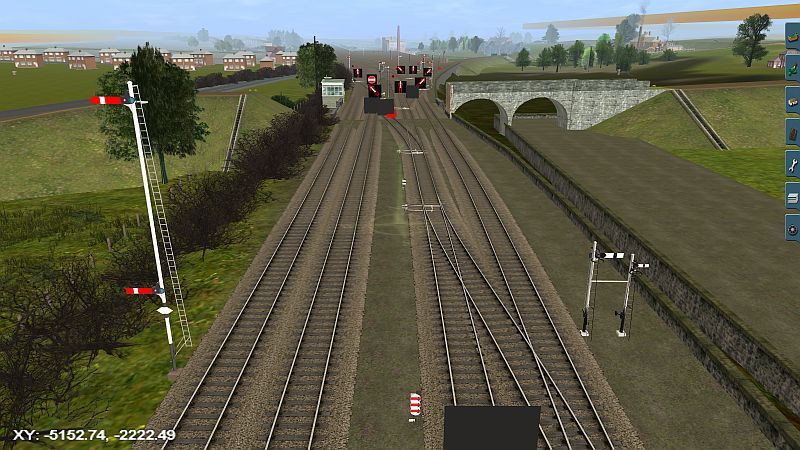The prototype functions of the 2 and 3 stacked disc ground signals are simply that they refer to a choice of 2 or 3 routes ahead. The top-most disc is cleared for the left-most route. As I mentioned above the meaning when "On" is always "Stop". When "Off", ie with the bar inclined either up or down, they mean "proceed with caution, as there may be an obstruction ahead."
In Trainz, use them with Bloodnok's Targets, the "feather/arrow" ones. I don't think it matters which, as long as they are consistent - ie use a straight, a left position 1 and a left position 2 for a 3-disc. The only restriction is that they will only clear when the section to the next signal is clear. To fool them, I use the "L5 Invisible Signal Permissive" signal.
Here's a screenshot of a 3-way stacked disc, with targets beyond.

This is the view a bit further on. Here there is a 3-arm signal (as close as I could get to the prototype - it should be a 2-arm long doll and a single arm short doll - but that's not available), again with the 3 targets beyond it. This works in the same way as the 3-disc ground signal. You can just make out the yellow arrow in the centre track before it divides again. This is the invisible permissive signal, to allow the visible signal to clear when the route is set, but the sidings occupied.

Hope that's made it a bit clearer.
In Trainz, use them with Bloodnok's Targets, the "feather/arrow" ones. I don't think it matters which, as long as they are consistent - ie use a straight, a left position 1 and a left position 2 for a 3-disc. The only restriction is that they will only clear when the section to the next signal is clear. To fool them, I use the "L5 Invisible Signal Permissive" signal.
Here's a screenshot of a 3-way stacked disc, with targets beyond.

This is the view a bit further on. Here there is a 3-arm signal (as close as I could get to the prototype - it should be a 2-arm long doll and a single arm short doll - but that's not available), again with the 3 targets beyond it. This works in the same way as the 3-disc ground signal. You can just make out the yellow arrow in the centre track before it divides again. This is the invisible permissive signal, to allow the visible signal to clear when the route is set, but the sidings occupied.

Hope that's made it a bit clearer.
Last edited:


